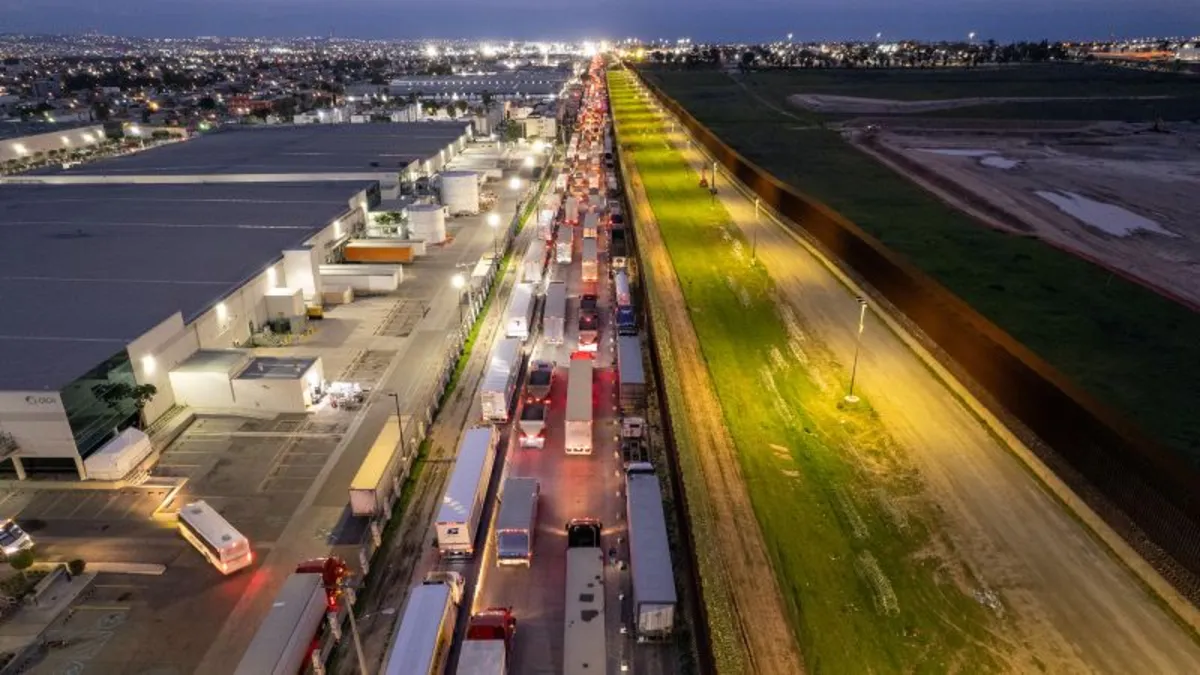
President Donald Trump’s much-anticipated “Liberation Day” has arrived, marking a pivotal moment in the realm of international trade and tariff policy. For months, businesses and nations worldwide have been left largely in the dark regarding Trump’s plans, which center around what he terms “reciprocal tariffs.” On April 2, Trump has vowed to provide answers to pressing questions that have been haunting various stakeholders. However, the announcement is unlikely to bring the clarity that businesses have been eagerly seeking since Trump’s election victory in November.
While President Trump has indicated that he has “settled” on a tariff plan, reports suggest that White House advisers were still presenting options to him just hours before the announcement, according to CNN. Among the proposals under consideration include customizing tariff rates for each U.S. trading partner, imposing tariffs selectively on certain countries, or implementing a flat rate as high as 20% on all imports. A White House official stated that a final decision would likely come just before the 4 PM ET announcement ceremony in the Rose Garden.
Trump’s ultimate decision on tariffs will reportedly take effect immediately, as conveyed by White House press secretary Karoline Leavitt. This timeline raises logistical concerns, as other nations may have little time to negotiate and could respond by implementing countermeasures, such as retaliatory tariffs on American goods.
Trump perceives tariffs as a tool to achieve several key objectives: curbing the flow of fentanyl and illegal migration into the U.S., leveling the playing field with trade partners, increasing government revenue, and bolstering domestic manufacturing. He has linked fentanyl and border-related issues to the existing 20% tariffs on Chinese imports and the threatened 25% tariffs for Canada and Mexico. In Trump’s view, the U.S. is being “ripped off” by countries with higher tariff rates on American products or those with which the U.S. runs a trade deficit.
This perspective has led to the pursuit of reciprocal tariffs that consider perceived non-tariff trade barriers, such as value-added taxes (VATs) and digital services taxes (DSTs). Developing countries like India, Brazil, and Vietnam could face significant adverse effects, as they have some of the largest discrepancies in tariff rates compared to those imposed by the U.S., according to a recent analysis by Morgan Stanley.
Various nations are already preparing their retaliatory strategies. European Commission President Ursula von der Leyen issued a warning, stating that the EU has “a strong plan” to respond to U.S. tariffs. Countries such as Canada, Mexico, China, Japan, and South Korea are also solidifying their counterplans. Chinese Foreign Minister Wang Yi emphasized that Beijing would “counterattack” if the U.S. continues its current trajectory, asserting that “America First” should not equate to American bullying.
In contrast, Israel has opted for a different strategy, announcing the cancellation of all tariffs on U.S. goods. This move appears aimed at avoiding scrutiny from the Trump administration, despite Israel having a minimal tariff framework on U.S. exports.
The introduction of new tariffs, alongside existing 25% tariffs on steel and aluminum imports, raises concerns about rising costs for consumers and potential repercussions on the U.S. economy. Analysts warn that an expansive tariff strategy could lead to significant price increases and may tip the economy toward a recession. Goldman Sachs analysts have suggested that the economic growth resulting from Trump’s fiscal policies may not compensate for the negative impacts of the extensive tariff plan.
Despite these warnings, Trump and his advisers remain optimistic, asserting that plans for tax cuts and deregulation will help mitigate inflation, potentially offsetting the adverse effects of the new tariffs. Leavitt expressed confidence in the administration’s approach, stating, “It is going to work.”
As President Trump prepares to unveil his tariff plan on “Liberation Day,” the implications for global trade remain uncertain. With the potential for immediate implementation and widespread retaliatory measures, businesses and nations are bracing for a new phase in the ongoing trade war. The coming days will reveal the true impact of these decisions on the U.S. economy and international relations.